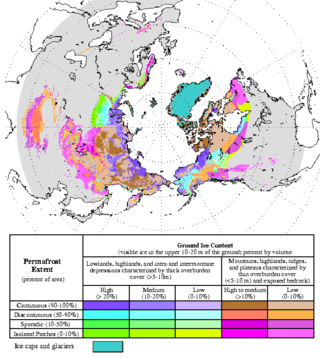Soil carbon feedback
[4][5] A 2018 study concludes, "Climate-driven losses of soil carbon are currently occurring across many ecosystems, with a detectable and sustained trend emerging at the global scale.
"[2][6] Thawing of permafrost (frozen ground), which is located in higher latitudes, the Arctic and sub-Arctic regions, suggest based on observational evidence a linear and chronic release of greenhouse gas emissions with ongoing climate change from these carbon dynamics.
[7] A study published in 2011 identified a so-called compost-bomb instability, related to a tipping point with explosive soil carbon releases from peatlands.
The authors noted that there is a unique stable soil carbon equilibrium for any fixed atmospheric temperature.
[8] A limitation in our understanding of carbon cycling comes from the insufficient incorporation of soil animals, including insects and worms, and their interactions with microbial communities into global decomposition models.

